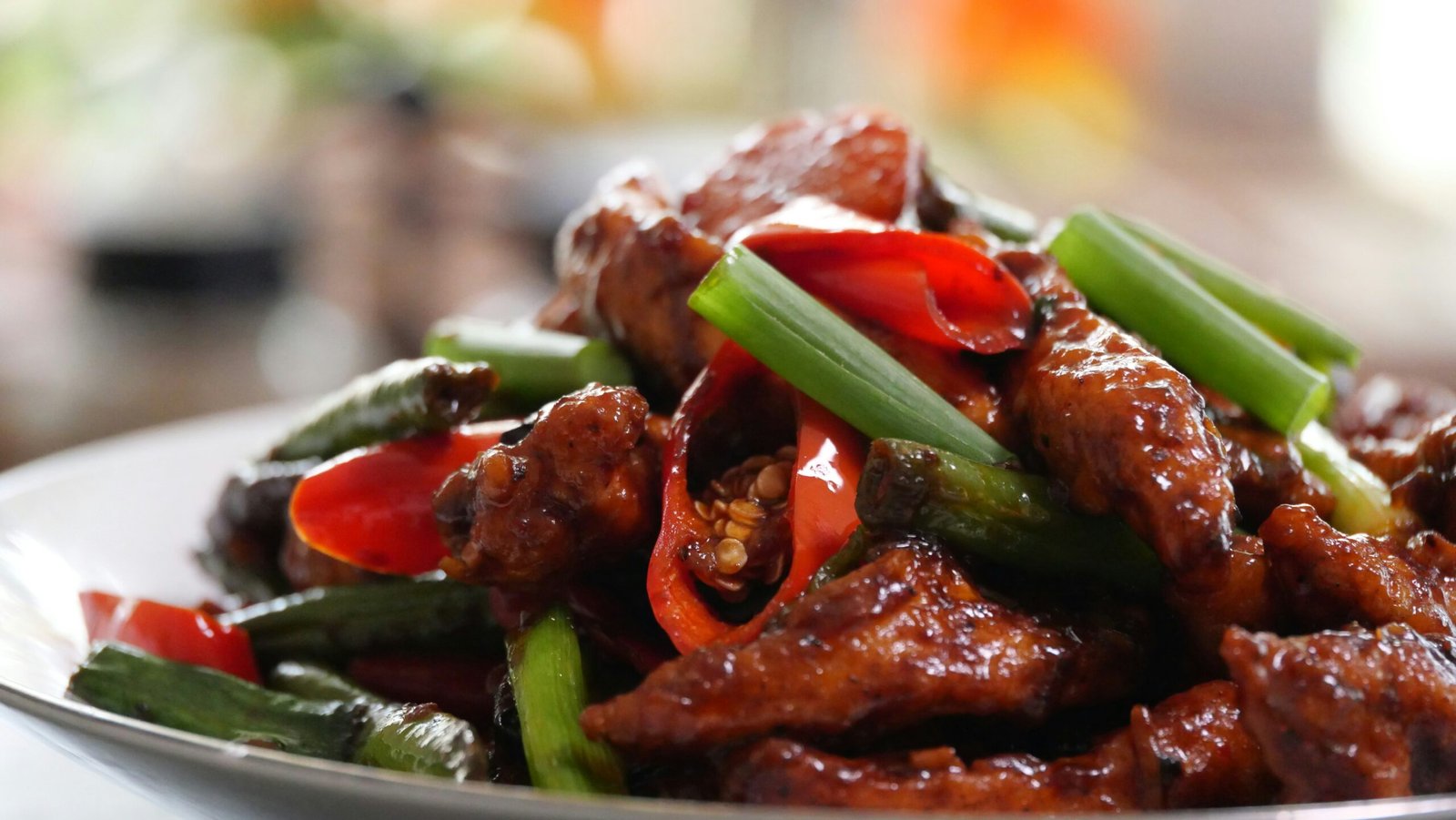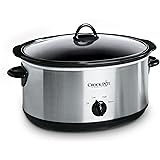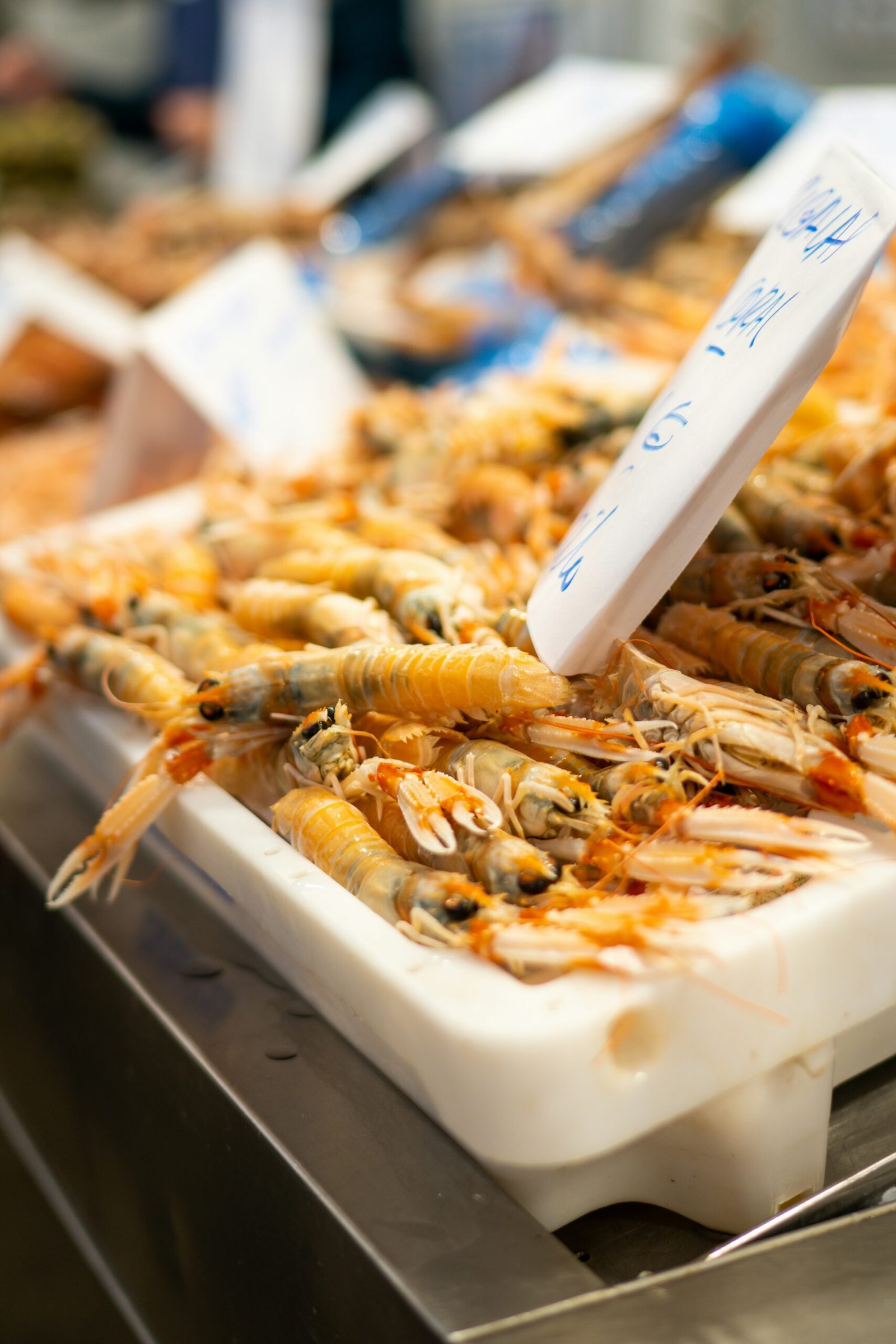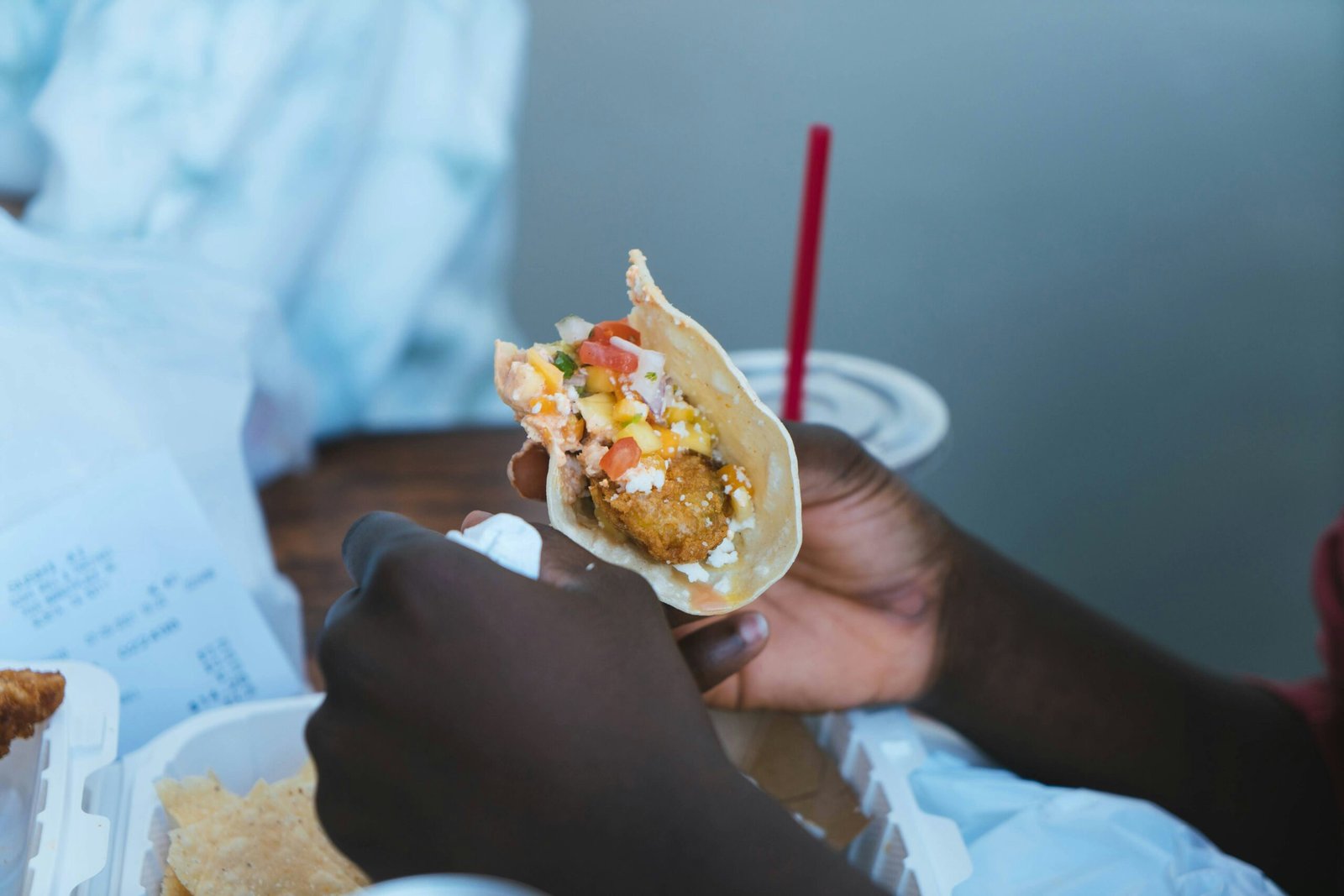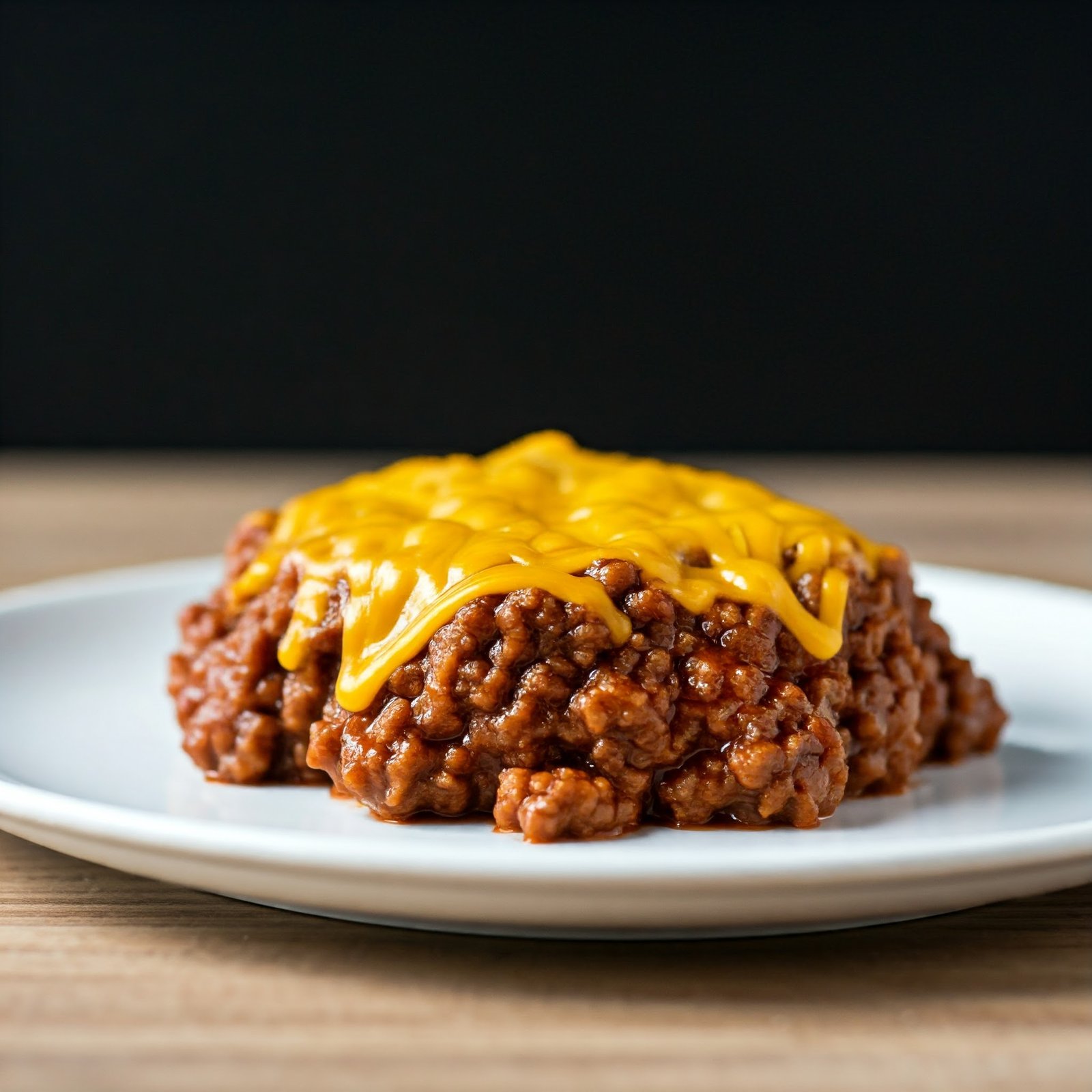Introduction to Chicken Piccata
Chicken Piccata is a vibrant dish that hails from Italian cuisine, specifically from the regions of Southern Italy. The term ‘piccata’ refers to a cooking method that involves sautéing meat, which is typically pounded thin, then served with a savory sauce often composed of lemon, butter, and capers. This unique balance of flavors—tangy lemon paired with the briny taste of capers—offers a refreshing culinary experience that has captured the hearts of food enthusiasts across the globe.
The popularity of Chicken Piccata can be attributed to its simple yet sophisticated preparation, making it an ideal choice for both casual family dinners and elegant gatherings. The dish allows for adaptations based on regional preferences and available ingredients. Although the traditional recipe features chicken, variations using veal or fish, such as scallops, have emerged, showcasing the flexibility inherent in this dish. Its adaptability continues to draw in chefs and home cooks alike, inspiring numerous interpretations across various cuisines.
<paside a=”” among=”” and=”” appeal=”” aspects,=”” be=”” can=”” chicken=”” choice=”” contribute=”” delicious=”” delightful=”” derived=”” diners.<pinterestingly, a=”” also=”” and=”” appealing=”” appearing=”” array=”” as=”” beloved=”” blend=”” but=”” can=”” caper=”” chicken=”” chicken,=”” comfortably=”” compromising=”” culinary=”” culture,=”” dish.=”” dishes=”” diverse=”” enhances=”” epitomizes=”” essence=”” familiarity,=”” flavor.=”” food=”” frequently=”” further=”” has=”” how=”” iconic=”” in=”” italian=”” its=”” lemon=”” made=”” mark=”” menus=”” not=”” of=”” on=”” only=”” originality=”” overall,=”” p=”” palates.
Ingredients Needed for Chicken Piccata
To prepare a delightful Chicken Piccata, it is essential to gather specific ingredients that contribute to its tangy and savory flavor profile. Below is a comprehensive list of the necessary components, along with measurements and possible substitutes for enhanced accessibility.
1. **Chicken Breasts**: Two boneless, skinless chicken breasts, ideally weighing around 6 ounces each. For a healthier option, chicken thighs can be used, but this may slightly alter the dish’s traditional flavor.
2. **All-Purpose Flour**: You will need approximately ½ cup of all-purpose flour for dredging the chicken. If looking for a gluten-free option, almond flour or a gluten-free all-purpose blend can serve as successful substitutes.
3. **Lemons**: The recipe requires the juice of two fresh lemons, along with additional slices for garnishing. For a slightly different taste, limes may be used, though they will impart a different acidity.
4. **Capers**: One to two tablespoons of capers are necessary, adding a briny flavor to the dish. If unavailable, chopped green olives can provide an alternative, albeit a less tangy taste.
5. **Butter**: For cooking and enhancing richness, 4 tablespoons of unsalted butter are required. A healthier alternative can be olive oil, which will also complement the overall flavor.
6. **Fresh Parsley**: Finally, around two tablespoons of finely chopped fresh parsley will be needed for garnish, contributing a touch of color and freshness. Dried parsley can work in a pinch, but fresh parsley is recommended for optimal flavor.
These ingredients collectively create the essence of Chicken Piccata, ensuring a balance of flavors and textures that makes this dish a timeless favorite. Preparing these can facilitate an easy and enjoyable cooking experience.
Step-by-Step Instructions
To prepare a flavorful Chicken Piccata, begin by gathering all necessary ingredients, which include boneless chicken breasts, flour, olive oil, butter, garlic, chicken broth, capers, and fresh lemon juice. Ensure that the chicken breasts are of uniform thickness, which can be achieved by gently pounding them to about half an inch thick for even cooking.
Next, season both sides of the chicken breasts with salt and pepper. Coat each piece in flour, shaking off any excess. This flour coating will help create a delicious crust once pan-fried.
In a large skillet, heat three tablespoons of olive oil over medium-high heat. Once the oil is hot, add the floured chicken breasts to the pan, being careful not to overcrowd them. Cook for about 3-4 minutes per side, or until the chicken is golden brown and cooked through. An internal temperature of 165°F (75°C) verifies thorough cooking.
When the chicken is done, remove it from the skillet and place it on a plate. Cover the chicken loosely with foil to keep it warm. In the same skillet, reduce the heat to medium, adding two tablespoons of butter and minced garlic. Sauté for approximately 30 seconds, taking care not to let the garlic burn.
Next, pour in half a cup of chicken broth and the juice of one lemon, scraping the bottom of the skillet to incorporate any browned bits. Add in two tablespoons of capers, mixing everything well, and let the sauce simmer for about 2 minutes to thicken slightly.
Return the chicken to the skillet and spoon the sauce over it, allowing the flavors to meld for another minute. Serve your Chicken Piccata hot, garnished with fresh parsley, to add a touch of color and brightness to this tangy dish.
Preparation Tips
To create a delectable chicken piccata, preparation plays a crucial role in achieving the desired taste and texture. An essential first step is to pound the chicken breasts to ensure even cooking. Begin by placing each breast between two sheets of plastic wrap or parchment paper. Using a meat mallet or a rolling pin, gently pound the chicken to about half an inch thick. This technique not only aids in tenderizing the meat but also promotes consistent cooking, preventing parts from being overcooked while others remain underdone.
Another vital component of chicken piccata is the lemon, which adds a bright, tangy flavor. To extract maximum flavor, proper zesting and juicing are necessary. Start by washing the lemons thoroughly and using a microplane or a zester to remove the yellow outer layer of the peel, being cautious not to include the bitter white pith beneath. This zest will contribute essential oils and enhance the flavor profile. Once zested, cut the lemons in half and use a citrus juicer to extract the juice, ensuring to catch any seeds that may be released. Fresh lemon juice is key to an authentic chicken piccata.
Coating the chicken properly before cooking is also critical for achieving that perfect golden-brown crust. Prepare a mixture of all-purpose flour, salt, and pepper on a shallow plate. Dredging each pounded chicken breast in this flour mixture will create a flavorful coating. Be sure to shake off any excess flour before cooking, as too much can lead to a gummy texture. This method not only enhances the dish’s appearance but also contributes depth to the overall flavor.
By following these preparation tips, including proper chicken pounding, effective lemon zesting and juicing, and correct coating techniques, one can set the foundation for a successful chicken piccata that is tangy, flavorful, and satisfying.
Cooking Techniques
Cooking chicken piccata involves a series of essential techniques that contribute to its signature tangy flavor and tender texture. The first and most crucial step is properly searing the chicken. Begin by selecting chicken cutlets, preferably from the breast, which should be pounded to an even thickness to promote uniform cooking. Before cooking, pat the chicken dry with a paper towel; this ensures a good sear and prevents steaming. Season the cutlets with salt and pepper, and then heat a generous amount of olive oil in a large skillet over medium-high heat. Once the oil is shimmering but not smoking, carefully add the chicken cutlets, ensuring not to overcrowd the pan. This allows each piece to achieve a golden crust while locking in moisture.
Cook the chicken for approximately 3-4 minutes on each side, flipping only once to avoid breaking the crust. The goal is to achieve a beautiful golden-brown color while ensuring the chicken is fully cooked through, reaching an internal temperature of 165°F (75°C). Once cooked, transfer the cutlets to a plate and cover them with aluminum foil to keep warm while preparing the sauce.
The sauce, a hallmark of chicken piccata, is made using the delicious pan drippings left in the skillet. Begin by reducing the heat slightly and adding a small amount of minced garlic to the remaining oil; sauté until fragrant. Then, deglaze the pan with white wine or chicken broth, scraping up the brown bits from the bottom. This process not only enhances the sauce’s depth of flavor but also incorporates the essence of the seared chicken. After the liquid has reduced by half, add freshly squeezed lemon juice and capers. Finally, whisk in a bit of butter to create a rich and velvety texture, transforming the simple pan drippings into a flavorful sauce that complements the chicken exquisitely.
Serving Suggestions
When it comes to enjoying chicken piccata, selecting the right accompaniments can elevate the meal and enhance its tangy flavor. This classic dish, characterized by its lemony sauce and capers, pairs beautifully with a variety of sides that complement its vibrant taste. One of the most popular options is pasta, particularly angel hair or fettuccine, which can soak up the delightful sauce. A simple preparation with olive oil and garlic can enhance the overall experience without overpowering the main dish.
Another excellent pairing is rice. A light lemon-infused white rice can anchor the flavors of the chicken piccata, creating a harmonious balance with the tanginess of the sauce. For a heartier option, consider serving the dish alongside a saffron-infused risotto, which adds a creamy texture and a touch of sophistication to the plate, making it perfect for dinner parties or special occasions.
Vegetable sides also play a crucial role in completing the meal. Roasted asparagus, steamed broccoli, or sautéed green beans are splendid choices that add color and nutritional value, while their mild flavors work in tandem with the chicken piccata. For a more whimsical touch, a mixed green salad with a light vinaigrette can provide a refreshing contrast and cleanse the palate between bites of the sumptuous chicken.
Table settings can further enhance the dining experience. Consider using lemon-themed decor, such as yellow napkins or lemon-patterned tablecloths, to echo the flavors of the dish. Pair your meal with a light, crisp white wine, such as Sauvignon Blanc or Pinot Grigio, which complements the chicken piccata’s acidity and provides a delightful pairing. Thoughtful accompaniments, both culinary and aesthetic, can truly make the experience of enjoying chicken piccata memorable and enjoyable.
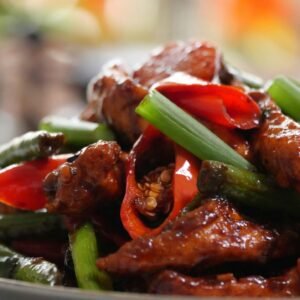
Chicken Piccata Recipe
Ingredients
- 1 pound boneless skinless chicken breasts, thinly pounded
- 1/2 cup all-purpose flour
- 1/4 teaspoon salt
- 1/8 teaspoon black pepper
- 4 tablespoons unsalted butter
- 2 tablespoons olive oil
- 1/4 cup fresh lemon juice
- 1/4 cup chicken broth
- 2 tablespoons capers drained
- 2 tablespoons chopped fresh parsley
- 1 tablespoon grated Parmesan cheese
Instructions
- Prepare the chicken: In a shallow dish, combine flour, salt, and pepper. Dredge chicken breasts in the flour mixture, shaking off any excess.
- Cook the chicken: Heat butter and olive oil in a large skillet over medium-high heat. Add chicken breasts and cook for 3-4 minutes per side, or until golden brown and cooked through. Remove chicken from skillet and set aside.
- Make the sauce: In the same skillet, add lemon juice, chicken broth, and capers. Bring to a simmer and cook for 1-2 minutes, or until slightly thickened.
- Finish and serve: Return chicken breasts to the skillet and coat with the sauce. Sprinkle with chopped parsley and grated Parmesan cheese. Serve immediately with pasta, rice, or vegetables.
- Enjoy your delicious Chicken Piccata!
Notes
Prep time: 15 minutes
Cook time: 15 minutes
Wine Pairings
When it comes to enjoying a delicious chicken piccata, selecting the right wine can greatly enhance the dining experience. The key to pairing wine with this dish lies in its bright, tangy flavor profile, characterized by the use of fresh lemon juice, capers, and herbs. The acidity of the dish typically calls for a white wine that balances both the richness of the chicken and the zestiness of the sauce.
One of the most recommended wines to accompany chicken piccata is Sauvignon Blanc. This varietal is known for its vibrant acidity and crisp character, making it an ideal match for the lemony notes of the piccata sauce. An herbaceous Sauvignon Blanc can also complement the culinary herbs used in the dish, creating a harmonious blend of flavors. Look for bottle options from regions such as New Zealand or California for their bright and zesty expressions.
Another excellent choice is Pinot Grigio, which offers a lighter body and refreshing palate. This wine’s clean and fruity profile pairs well with the delicate texture of the chicken while enhancing the overall freshness of the meal. Italian Pinot Grigio, in particular, complements the traditional roots of the chicken piccata dish, providing a classic and satisfying pairing experience.
When selecting any wine for chicken piccata, it is also important to consider the wine’s residual sweetness and acidity. A dry wine that showcases bright fruit notes will elevate the tartness of the dish rather than overpower it. Whether opting for a Sauvignon Blanc or Pinot Grigio, choosing a bottle that has been well-reviewed can ensure a fulfilling experience that matches the elegance of chicken piccata.
Variations of Chicken Piccata
Chicken piccata, a classic Italian dish celebrated for its tangy flavor profile, lends itself to a multitude of delicious variations. One popular alternative is shrimp piccata, which replaces chicken with succulent shrimp, enhancing the dish’s seafood appeal. The shrimp, when sautéed with the hallmark ingredients of lemon, capers, and garlic, create a vibrant and refreshing meal that captures the essence of the original while adding a delicate touch of the ocean.
For those seeking vegetarian options, eggplant or mushrooms can serve as excellent substitutes for chicken. Eggplant piccata showcases the vegetable’s ability to absorb flavors, immersing it in the tantalizing lemon-caper sauce. The result is a hearty dish that resonates well with those adhering to plant-based diets. Alternatively, mushrooms offer a rich, earthy flavor that complements the brightness of the traditional piccata sauce, making mushroom piccata a favorite for many. Both vegetarian variations not only cater to diverse dietary preferences but also provide an opportunity for home cooks to experiment with textures and flavors.
Regions across Italy also feature unique twists on the basic chicken piccata recipe, further diversifying its appeal. For instance, in Southern Italy, a touch of white wine or a splash of balsamic vinegar may be added to the sauce for additional depth. In contrast, Northern variants might incorporate cream, yielding a richer, smoother texture that modifies the traditional tanginess of the dish. These regional adaptations inspire culinary creativity, allowing individuals to personalize their piccata experience. As a result, each variation maintains the core principles of the traditional recipe while expressing a distinct culinary identity.
Storing Leftovers
Proper storage of chicken piccata leftovers is crucial to maintaining its tangy flavor and freshness. To begin with, any remaining chicken piccata should be cooled to room temperature before being stored. This practice helps to prevent bacterial growth and preserve the quality of the dish. Once cooled, place the leftovers in an airtight container, ideally glass or high-quality plastic, to ensure they retain their moisture and taste.
When refrigerating chicken piccata, it is advisable to consume the leftovers within three to four days to ensure optimal flavor and safety. Always store the dish in the refrigerator, maintaining a temperature of 40°F or below. If you find that you cannot consume the leftovers within this time frame, consider freezing them for longer preservation. Chicken piccata can be frozen for up to three months without a significant loss of flavor or texture, although some ingredients, such as capers or lemon slices, may not freeze well. When freezing, it is best to separate the chicken from the sauce where possible, as this aids in maintaining the dish’s integrity when reheated.
To reheat frozen chicken piccata, transfer it to the refrigerator and allow it to thaw overnight. After defrosting, reheat the dish gently in a skillet over low heat, adding a splash of broth or water to keep the sauce from becoming too thick. If you prefer to use a microwave, ensure that you cover the dish with a microwave-safe lid to retain moisture. Reheating in this manner will help to preserve the original flavor profile of the chicken piccata, making it just as enjoyable as when it was first prepared.
Health Benefits of Chicken Piccata
Chicken Piccata is a delightful dish that not only tantalizes the taste buds but also offers numerous health benefits stemming from its key ingredients. The primary component, chicken, is a fantastic source of high-quality protein, which is essential for muscle growth, tissue repair, and overall bodily function. Consuming lean protein like chicken can aid in maintaining a healthy weight, making it an ideal choice for those on a balanced diet.
Additionally, chicken is rich in vital nutrients, including B vitamins such as niacin and B6. These vitamins play a crucial role in energy metabolism, helping the body convert food into energy efficiently. Moreover, chicken contains essential minerals like phosphorus and selenium, which support bone health and the immune system, respectively. By incorporating chicken into your meals, you benefit from these nutrients that are fundamental to overall health.
Another significant element of Chicken Piccata is fresh lemon. Lemons are packed with vitamin C, a powerful antioxidant that contributes to skin health, boosts the immune system, and assists the body in absorbing iron from plant-based foods. This citrus fruit also adds a refreshing tang to the dish, enhancing both flavor and nutritional value. The presence of lemon juice promotes hydration and aids digestion, further contributing to the healthfulness of this recipe.
Moreover, Chicken Piccata is generally prepared with olive oil, another healthy ingredient known for its monounsaturated fats. These fats can help lower bad cholesterol levels, reducing the risk of heart disease. By choosing to prepare Chicken Piccata with these wholesome ingredients, you are opting for a meal that is not only delicious but also beneficial for maintaining a balanced diet. This dish provides a perfect blend of nutrients while appealing to those who prioritize their health.
Cooking for Special Diets
Creating a delightful chicken piccata is entirely feasible, even for those with specific dietary needs. For individuals adhering to a gluten-free diet, the primary alteration lies in the flour used for dredging the chicken. Traditional all-purpose flour can be substituted with a gluten-free blend or almond flour. These alternatives will still provide that essential crustiness, allowing for an enjoyable eating experience without compromising one’s dietary restrictions.
In addition to using gluten-free flour, it is imperative to ensure that any broth or other liquid components in the recipe are also gluten-free. Look for brands that specifically label their products as gluten-free. This attention to detail will guarantee that the chicken piccata remains compliant with gluten-free standards while retaining its signature flavor.
For those who must follow a dairy-free diet, the typical butter used in the cooking process can easily be replaced. Avocado oil, coconut oil, or a plant-based butter alternative can serve as suitable substitutes without taking away from the dish’s integrity. Additionally, when preparing the lemon sauce, consider using a dairy-free cream made from cashews or coconut milk for a rich and creamy taste, complementing the tanginess of the capers and lemon juice.
It is also worth noting that the traditional capers used in chicken piccata are naturally gluten-free and dairy-free, making them a perfect addition that suits various dietary restrictions. To enhance flavor, one might also incorporate fresh herbs like parsley and basil, which provide both a burst of freshness and a healthful element to the dish. This way, individuals with special dietary needs can experience the authentic taste of chicken piccata while enjoying peace of mind regarding their nutritional choices.
Engaging Family in Cooking
Cooking can be an enjoyable family affair, especially when everyone is involved in the process. Having raised three adult children, I have found that including them in the kitchen not only strengthens our bond but also introduces them to valuable culinary skills. One way we make cooking together meaningful is by preparing recipes like Chicken Piccata, which is both tangy and flavorful, appealing to everyone’s taste buds. The vibrant flavors of lemon, capers, and chicken stir excitement, making it an ideal dish for a family cooking session.
Throughout the years, I have adopted various strategies to keep the kitchen atmosphere lively and engaging. For instance, I often designate specific roles for each family member. One child enjoys zesting lemons, while another takes charge of the capers. This division of tasks allows everyone to contribute in a personalized way, fostering a sense of ownership over the meal we are crafting together. Not only does this make the process more enjoyable, but it also encourages collaboration and conversations that bring our family closer.
Additionally, we turn cooking into a learning experience. As we prepare the Chicken Piccata, I discuss the origins of the recipe and share tips on how to enhance its flavors. By incorporating anecdotes about my own culinary journey, I strive to ignite their passion for cooking. Sharing stories while we sauté chicken and whisk sauce adds a layer of warmth to our time spent together. Most importantly, the act of sharing meals afterwards creates lasting memories that we cherish as a family. Cooking allows us to connect while enjoying delightful dishes, reinforcing the joy of preparing food together.
Cultural Significance of Chicken Piccata
Chicken piccata is a dish that holds a prominent place in Italian cuisine, renowned for its vibrant flavors and simple preparation. Originating from Southern Italy, particularly the Naples region, the term “piccata” refers to the method of cooking, which involves sautéing and serving with a sauce made of lemon juice, capers, and butter. This technique has been embraced in numerous culinary traditions and thus has become a beloved staple in kitchens around the world.
The cultural significance of chicken piccata extends beyond its delectable taste; it embodies the Italian principle of using fresh, high-quality ingredients that reflect the essence of the season. Home cooks and professional chefs alike are drawn to its balance of flavors, where the tartness of the lemon and the brininess of the capers harmoniously complement the tender chicken. This dish serves as a testament to the Italian culinary philosophy that resonates with many diners and inspires them to recreate it at home.
<pin a=”” adaptability=”” addition,=”” alike.
Across the globe, chicken piccata is celebrated not just as a meal but also as a representation of Italian culture and tradition. It invites people to gather, share, and enjoy the simple pleasures of life through good food, fostering connections among family and friends. As culinary enthusiasts continue to explore flavors from around the world, chicken piccata remains a shining example of how traditional dishes can transcend borders and bring people together through gastronomy.
Using Fresh Ingredients
When preparing chicken piccata, the quality of the ingredients is paramount to achieving a dish bursting with flavor. Utilizing fresh, high-quality ingredients not only enhances the taste but also elevates the overall dining experience. The key components include chicken, lemons, capers, and fresh herbs, all of which play crucial roles in creating the zesty profile characteristic of this classic Italian dish.
Starting with the chicken, it is advisable to select boneless, skinless chicken breasts that are labeled as organic or free-range. These options generally offer superior flavor and tenderness compared to conventionally raised poultry. Inspect the texture and color of the chicken; it should appear pink with no signs of discoloration. Fresh chicken will have a firm texture and a subtle, clean scent. Ideally, purchasing from a reputable butcher or local farmer’s market can ensure better quality compared to mass-produced alternatives.
Lemons are another vital ingredient in chicken piccata. When selecting lemons, look for those that feel heavy for their size and have a vibrant yellow color, indicating ripeness and juiciness. Freshly squeezed lemon juice is essential; pre-packaged juices often lack the bright, tart flavor that freshly squeezed lemons provide. Additionally, incorporating fresh herbs such as parsley enhances the dish’s aromatic qualities. Choose herbs that are vibrant and fragrant—dried herbs will not impart the same refreshing qualities.
Finally, capers should be chosen with care as well. Opt for high-quality capers that are stored in brine rather than salt, as this ensures better preservation of their tangy flavor. Fresh, high-quality ingredients empower cooks to create a chicken piccata that is not only delicious but also represents the essence of Italian cuisine. The time invested in sourcing these ingredients will yield a dish that is notably rich in flavor and satisfaction.
Food Presentation Tips
Food presentation plays a crucial role in elevating the dining experience, especially when serving a dish as flavorful as chicken piccata. The visual appeal of a meal can significantly enhance anticipation and enjoyment. To present chicken piccata attractively, one can begin with selecting the right plate. A white or neutral-colored plate allows the vibrant colors of the dish—such as the golden-brown chicken, bright lemon slices, and vibrant parsley—to stand out. The choice of plate should complement but not overshadow the food.
When plating chicken piccata, it is important to create a balance of colors and textures. Start by placing the chicken breast in the center of the plate, arranging it slightly off-center can add visual intrigue. Drizzling the luscious lemon caper sauce over the chicken not only adds flavor but also creates a beautiful glaze that catches the eye. For an added touch of color, scatter freshly chopped parsley over the top, creating an appealing contrast against the chicken and sauce.
Incorporating side dishes creatively can also enhance presentation. For instance, a small scoop of fluffy garlic mashed potatoes or al dente pasta can be positioned next to the chicken, adding variety to the plate. Additionally, consider adding a garnish of lemon wedges on the side, which not only brightens the presentation but invites diners to enhance their meal with an extra squeeze of citrus.
Finally, pay attention to the overall plating technique. Avoid overcrowding the plate; instead, allow each element some space to breathe. Clean the edges of the plate for a polished look, removing any drips or smudges. By implementing these plating tips, one can transform chicken piccata into a stunning visual masterpiece, enriching the entire dining experience.
Accompanying Sauces and Condiments
Enhancing the dining experience of chicken piccata can be significantly achieved through thoughtful selection of accompanying sauces and condiments. The delightful tang of lemon and the savory notes of capers in the piccata can find perfect companions in various sides that add both flavor and texture.
One excellent option is olive tapenade, which brings a rich, briny depth to the plate. This spread, made from finely chopped olives, capers, and often enriched with olive oil, can be served on the side or even drizzled atop the chicken. The bold flavors of the tapenade beautifully complement the zestiness of chicken piccata and introduce a contrasting texture that elevates the dish.
Another appealing accompaniment is garlic bread, which can serve both as a flavor enhancer and as a vessel for soaking up the delicious lemony sauce. The crunchy, buttery profile of garlic bread not only introduces an additional layer of flavor but also provides a satisfying contrast to the tender chicken. This pairing ensures that every aspect of the meal resonates, leading to an enjoyable culinary experience.
For those who prefer a lighter touch, a simple arugula salad can be a refreshing complement. Peppery arugula, perhaps dressed lightly with olive oil and lemon juice, introduces an element of brightness and balances the richness of the chicken. This combination not only maintains the tangy theme of the dish but also adds visual appeal with its vibrant colors.
Ultimately, the selection of sauces and condiments can enhance the overall flavor profile of chicken piccata, allowing for a more dynamic gastronomic experience. Each of these accompaniments brings its unique charm and reinforces the dish’s inherent tanginess while providing added complexity and satisfaction.
Popular Cooking Myths Debunked
Cooking chicken, while seemingly straightforward, is often surrounded by a myriad of myths that can potentially hinder a chef’s ability to create flavorful dishes like chicken piccata. One common misconception is that washing raw chicken is necessary for hygiene. In reality, washing chicken can actually increase the risk of cross-contamination. The splatter can spread harmful bacteria present on the chicken to other surfaces, thus increasing the chance of foodborne illness. Cooking chicken thoroughly to the recommended internal temperature of 165°F (75°C) is the best method to ensure it is safe to eat.
Another myth suggests that searing chicken locks in moisture. While searing can enhance flavor through the Maillard reaction, it does not significantly prevent moisture loss. The best way to ensure succulent chicken is to use proper cooking techniques such as brining prior to cooking or using a meat thermometer to achieve the desired doneness without overcooking. Moreover, allowing the chicken to rest after cooking is essential for retaining juices, ensuring each bite is tender and juicy.
Some believe that dark meat chicken is less healthy than white meat. This is a misperception, as dark meat is packed with flavor and beneficial nutrients, including iron and zinc. While it does contain more fat, it can still be part of a balanced diet when consumed in moderation. Furthermore, using fresh ingredients, including herbs, lemons, and capers, not only elevates the flavor of a classic dish like chicken piccata but also helps to dispel the notion that cooking must be bland or uninspiring. By understanding these myths, cooks can feel more empowered to explore chicken dishes with confidence.
FAQs about Chicken Piccata
Chicken Piccata is a classic Italian dish cherished for its tangy flavors and simple preparation. However, many people have questions regarding its ingredients, cooking techniques, and dietary adaptations. This section addresses some of the most frequently asked questions to provide clarity on this delicious recipe.
What is the main ingredient in Chicken Piccata?
The primary ingredient in Chicken Piccata is chicken breasts, which are typically pounded thin to ensure even cooking. The dish is then enhanced with a flavorful sauce made of lemon juice, capers, and butter. This sauce is what gives Chicken Piccata its distinctive tangy taste.
Can I substitute chicken with another protein?
Yes, while chicken is the traditional choice, many home cooks opt for alternative proteins like veal, turkey, or even fish. For a vegetarian version, consider using eggplant or tofu, though these substitutes will slightly change the overall flavor profile of the dish. Whatever the choice, ensure the cooking times are adjusted accordingly to avoid undercooking or overcooking.
How long does it take to cook Chicken Piccata?
The cooking time for Chicken Piccata is relatively quick. On average, the chicken breasts will take about 6-7 minutes per side to cook thoroughly. The preparation, including pounding the chicken and preparing the sauce, may add an additional 10-15 minutes. Overall, expect the entire process to take around 30 minutes from start to finish, making it an excellent option for a weeknight dinner.
Can Chicken Piccata be made ahead of time?
While Chicken Piccata is best enjoyed fresh due to the zesty flavors of the sauce, it can be prepared in advance. You can cook the chicken and sauce separately and then combine them before serving. However, for the best taste and texture, it is recommended to serve the dish immediately after preparation.
How can I make Chicken Piccata gluten-free?
To adapt Chicken Piccata for a gluten-free diet, consider using gluten-free breadcrumbs for coating the chicken. Additionally, ensure that all sauces and stocks used in the preparation are certified gluten-free to maintain the integrity of the dish.
Conclusion: Enjoying Your Chicken Piccata
Making chicken piccata from scratch is not merely about cooking; it is an experience that brings joy and satisfaction to the kitchen. The delightful combination of tender chicken breasts, tangy lemon, and savory capers results in a dish that is both flavorful and memorable. As you prepare this classic Italian-American recipe, you not only create a delicious meal but also foster an environment of warmth and togetherness. The aromas wafting through your kitchen may evoke cherished memories of family gatherings or special occasions, adding to the significance of the dish.
One of the enchanting aspects of chicken piccata is its versatility. While the traditional recipe is cherished for its simplicity, many home cooks enjoy exploring various adaptations. You might choose to add fresh herbs, experiment with different types of protein, or even incorporate seasonal vegetables to elevate this savory dish. Each variation offers an opportunity to personalize your chicken piccata, allowing it to reflect your culinary style. These adjustments not only enhance the meal but can also pave the way for new family favorites.
We encourage you to dive into the cooking journey of chicken piccata and share your experiences with us. Have you tried a unique twist on the recipe? Or perhaps you have a family secret that enhances its flavor? Your contributions can inspire others in the community, fostering a shared love for this delightful dish. Engaging with fellow culinary enthusiasts can lead to the discovery of innovative ideas while celebrating the timeless tradition of cooking together. Remember, each meal prepared in your kitchen is an invitation to create lasting memories.

